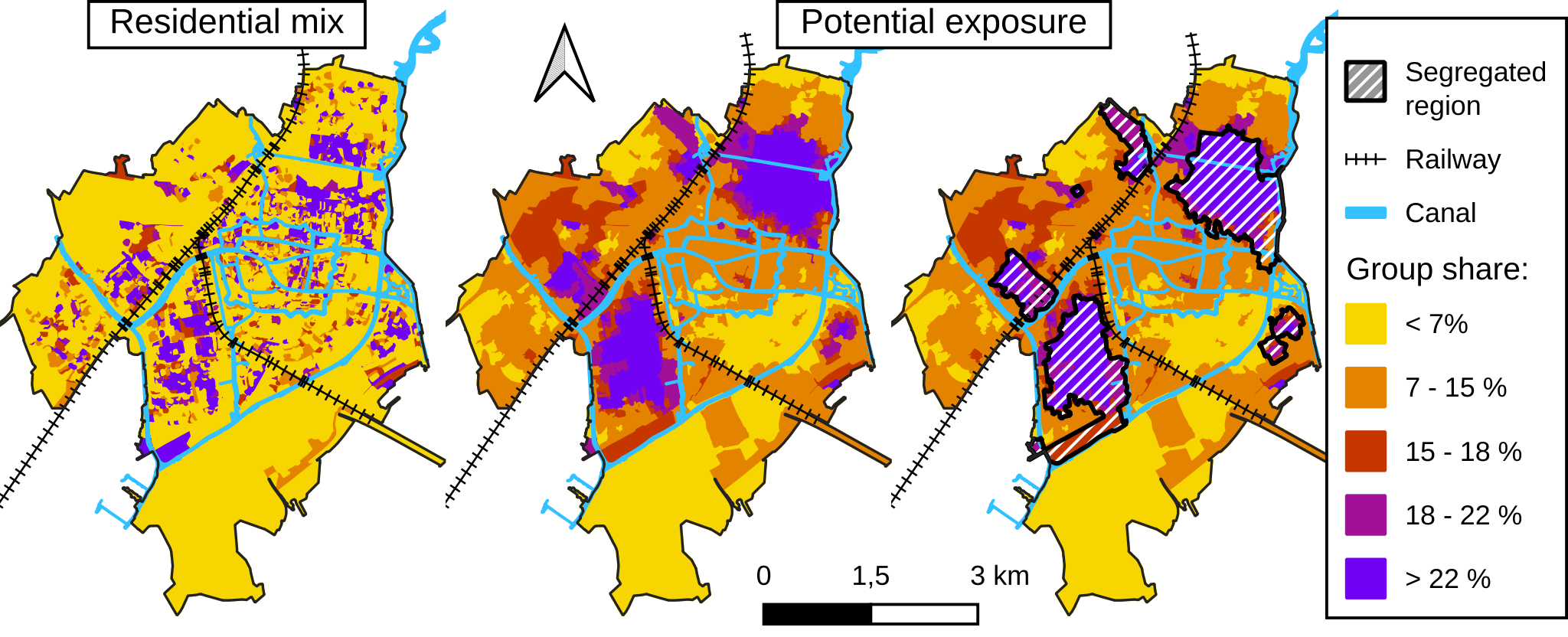Residential segregation patterns in cities and their consequence on social discontent
Residential segregation is a major issue for local, regional, and national authorities. It is known to exacerbate existing inequality across groups in various important aspects of life, such as educational achievements, well-being, and health conditions.
However, segregation is a phenomenon that is hard to quantify and assess. A lack of understanding of (1) the forms it takes, (2) its dynamics, and (3) its impact on social discontent, hampers authorities to address segregation effectively. This project aims to address these three knowledge gaps.
In the first study, we develop a regionalization method to identify residential segregation patterns and propose to characterize the forms they take along three dimensions: intensity, separation, and scale. These dimensions designate respectively the over-representation of a group in segregated regions, the proportion of people from that group living in these regions, and the spatial extent of these regions. We observe that highly diverse segregation patterns coexist across Dutch municipalities. Also, we have identified associations between patterns of segregation and city characteristics. Notably, our results suggest a proportional relation between the spatial scale of segregation and the city size.

In the second study, we investigate how these patterns have evolved between 2015 and 2020 across Dutch municipalities. We find a notable convergence in segregation patterns. In cities with historically homogeneous social enclaves, such as those located within the Randstad as well as other larger cities, these enclaves are becoming more mixed, while in other cities, they tend to become more homogeneous. Furthermore, the increase in the non-western migration background population correlates with the spatial expansion of social enclaves, rather than an increase in their homogeneity.

My current study focuses on examining the relationship between residential segregation and social discontent in urban areas. By leveraging data gathered from social media platforms, I employ AI techniques to interpret and map expressions of discontent within cities. I aim to elucidate the extent to which residential segregation contributes to and exacerbates social unrest.
Contact
Lucas Spierenburg
PhD Candidate
L.J.Spierenburg@tudelft.nl

